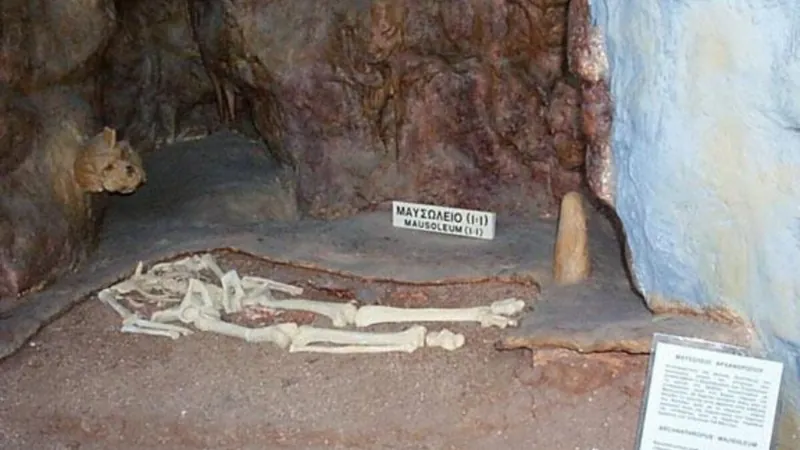
Ancient Skull Fused to Cave Wall: Unveiling the Mystery of a Lost Human Species
2025-09-05
Author: John Tan
In a spine-chilling discovery from 1960, a villager stumbled upon a humanoid skull merged with the wall of the Petralona cave in Greece. What appears to be a grotesque fossil might hold secrets about a previously unknown species of ancient human, as researchers have been grappling with its dating for over sixty years, concluding that it could be anywhere between 170,000 to 700,000 years old.
Researchers have shifted their focus from the skull’s uncertain position in the stratigraphy to an analysis of its peculiar calcite protrusion, similar to a unicorn's horn. By employing cutting-edge U-series dating—the process of measuring uranium decay in geological formations—they have now identified a minimum age of at least 290,000 years for the skull.
A Quest for Understanding: Searching for a Hidden Ancestor
Anthropologist Chris Stringer, who first encountered the skull in 1971 during his PhD travels, had suspicions from the start. "It didn’t fit the profiles of Homo erectus or Neanderthals," he recalls, sparking his theory that Europe was once home to another branch of human evolution.
The calcite growth surrounding the skull—a stalagmite that likely formed soon after the skull was left in the cave—provides key insights into its true age. According to Stringer, dating a tooth sample from the skull could yield even more definitive results, pending approval from authorities at the Aristotle University of Thessaloniki.
A Neanderthal's Neighbor: The Evolutionary Puzzle
Morphological analyses suggest that the Petralona skull represents a distinct and more primitive lineage of hominins, separate from Neanderthals and modern humans. This key finding supports the theory that this lost group coexisted with Neanderthals during Europe's Middle Pleistocene between 430,000 and 385,000 years ago.
Stringer’s long-held belief in a third human lineage—dubbed Homo heidelbergensis—has evolved. Originally thought to be a direct ancestor to both Neanderthals and Homo sapiens, Stringer now views heidelbergensis as a coexisting side branch of human evolution, possibly existing in Africa, Europe, and Asia for over a million years.
Connections Across Continents: A Shared Heritage?
Intriguingly, comparisons to the Kabwe cranium from Zambia, dating back around 300,000 years and suspected to belong to the same species, enrich the narrative. As researchers explore these ancient remains, the puzzle of human ancestry continues to unfold, revealing tantalizing links to our distant past.



 Brasil (PT)
Brasil (PT)
 Canada (EN)
Canada (EN)
 Chile (ES)
Chile (ES)
 Česko (CS)
Česko (CS)
 대한민국 (KO)
대한민국 (KO)
 España (ES)
España (ES)
 France (FR)
France (FR)
 Hong Kong (EN)
Hong Kong (EN)
 Italia (IT)
Italia (IT)
 日本 (JA)
日本 (JA)
 Magyarország (HU)
Magyarország (HU)
 Norge (NO)
Norge (NO)
 Polska (PL)
Polska (PL)
 Schweiz (DE)
Schweiz (DE)
 Singapore (EN)
Singapore (EN)
 Sverige (SV)
Sverige (SV)
 Suomi (FI)
Suomi (FI)
 Türkiye (TR)
Türkiye (TR)
 الإمارات العربية المتحدة (AR)
الإمارات العربية المتحدة (AR)